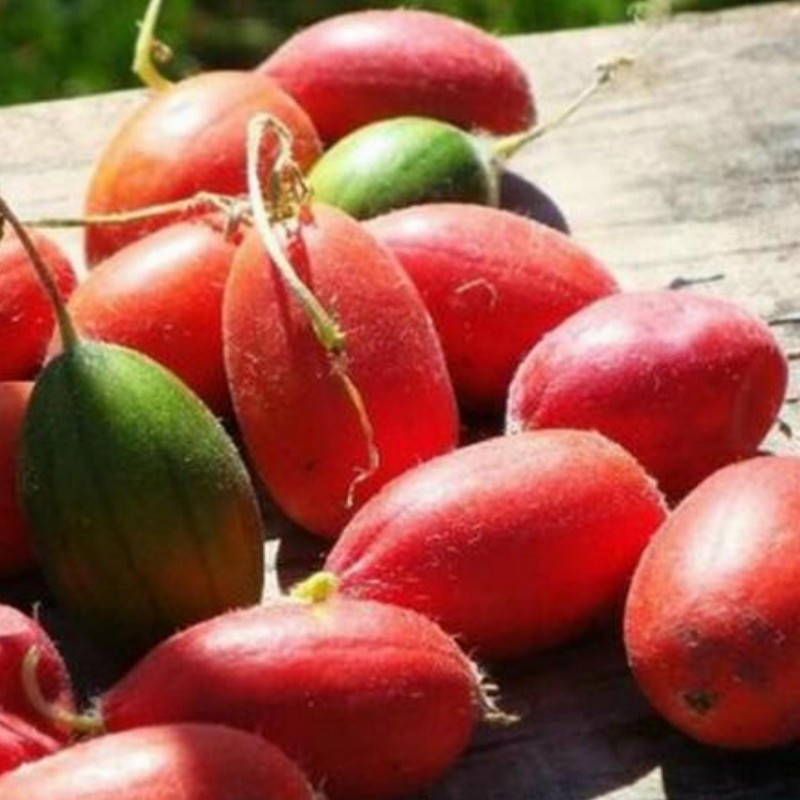











The perennial climber to 6m (20 ft) long. Frost hardy to zone 6a. This plant creates round tubers (similar to potatoes) and tasty, red fruits (which resemble Passion Fruit inside).
The perennial climber to 6m (20 ft) long. Frost hardy to zone 6a. This plant creates round tubers (similar to potatoes) and tasty, red fruits (which resemble Passion Fruit inside).
Very ornamental climber - numerous yellow flowers and red fruits.
Very rare plant.
Sow the seeds on the surface. Keep moist but not very wet. You can use fungicide to covering the seeds. To creation of fruits there are necessary male and female plants (from the seeds there should grow up both sex) and hand pollinating.
Warning: this species has been reported as a rare (but locally very abundantly growing) invasive plant in some countries, for example in the upper Midwest of the United States
Wikipedia:
Thladiantha dubia, the Manchu tubergourd, goldencreeper, wild potato, or (French) thladianthe douteuse, is a herbaceous perennial climbing vine of the gourd family.[2] It is native to Russia, northern China, and Korea, but has been introduced to Japan,[2] southeast Europe (Austria, Romania, Germany), the Galapagos Islands, and scattered locations in North America (Manitoba, Ontario, Quebec, Illinois, Massachusetts, Minnesota, New Hampshire, New York, Wisconsin).[3][4] It is occasionally grown as a medicinal plant, or as an ornamental in North America (the US and Canada).